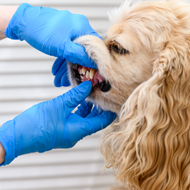Wild deer could be a "reservoir" for Schmallenberg
European scientists have raised concerns that the livestock virus Schmallenberg has been found in wild animals, which could act as a "reservoir" of infection.
Dr Mutien-Marie Garigliany, a veterinary expert at the Universite de Liege in Belgium is part of a team of experts studying cases of SBV in wildlife. As a result of their research, which suggests wild animals such as roe and red deer are affected by the virus, Dr Garigliany has called for "specific surveillance of wild animals for SBV."
Whilst it is believed wild deer can catch the virus, the affect of them and their offspring is as yet unknown. Dr Rachael Tarlinton, a virology expert and veterinary scientist at the University of Nottingham, said "we know wild deer get the virus [because] they produce antibodies to it. But deer have a different placental structure to cows and sheep - so we don't know if it gets across the placenta to affect foetuses."
According to Professor Trevor Drew of the UK government's Animal Health and Veterinary Laboratories Agency, the virus can infect native red deer, fallow deer, sika deer and roe deer. Speaking to the Environment, Food and Rural Affairs select committee, Professor Drew raised the difficulties faced with controlling Schmallenberg, a virus passed by bites from midges and other insects.
"It is just impossible to control midges across an area the size of Europe. Even if we had some national campaign, it would be quite simple that the midges would be blown over and of course we cannot control the disease in wild deer."
The huge financial impact of Schmallenberg on some farms is well known, with research from the University of Nottingham suggesting losses as high as 30 per cent in some infected flocks. While speaking to the select committee, the UK's deputy chief veterinary officer Alick Simmons noted that while a vaccine against SBV is not yet available, several are in development.
"This is a disease which we believe will either through vaccination or through natural spread become less of a problem over time," he told the committee. "And already in the areas we have been affected in northern Europe and to a certain extent in the south east of England, the disease is less than it was last year."



 The WSAVA has invited veterinary professionals to a webinar on responsible antibiotic usage in dentistry.
The WSAVA has invited veterinary professionals to a webinar on responsible antibiotic usage in dentistry.